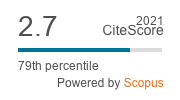Eigen neutrosophic Z-set and neutrosophic Z-relation: A nonlinear dynamic modeling approach under uncertainty
Keywords:
Neutrosophic Z-Set, Nonlinear Dynamics, Uncertainty Modeling, Stability Analysis, Mathematical ModelingAbstract
The modelling and Analysis of nonlinear systems under uncertainty are particularly difficult in scientific and engineering discipline. In many problems involving real world complex data, the inherent indeterminacy, vagueness and partial truth value associated with various real world complex phenomena is difficult to effectively capture using traditional frameworks. This study presents a novel nonlinear dynamic modelling framework based on Eigen Neutrosophic Z-Set and Neutrosophic Z-Relations framework to systematically handle the above challenges. The mathematical foundations of Neutrosophic Z sets are set up and discrete time dynamical systems given by Neutrosophic relational compositions are formulated. Properties of stability are rigorously analysed and proofs that
convergence to fixed point eigen structures are derived. Details are presented of computational algorithms for determining Greatest Eigen Neutrosophic Z-Set (GENZS) and Least Eigen Neutrosophic Z-Set (LENZS). The theoretical framework is validated through the simulations on representative systems in which the numerically generated solutions accommodate the fast convergence and retain
the stability of the systems under variation of the uncertainty conditions. The proposed approach provides a powerful and general means of modelling the nonlinear systems subject to uncertainty and could be applied, for example, in the area of engineering design, decision making systems and complex socio-economic modelling.
References
Zadeh, L. A. (2011). A note on Z-numbers. Information Sciences, 181(14), 2923–2932. https://doi.org/10.1016/j.ins.2011.02.022
Yager, R. R. (2012). On Z-valuations using Zadeh’s Z-numbers. International Journal of Intelligent Systems, 27(3), 259–278. https://doi.org/10.1002/int.20497
Smarandache, F. (2005). Neutrosophic set, a generalization of the intuitionistic fuzzy sets. International Journal of Pure and Applied Mathematics, 24, 287–297.
Sanchez, E. (1981). Eigen fuzzy sets and fuzzy relations. Journal of Mathematical Analysis and Applications, 81(2), 399–421. https://doi.org/10.1016/0022-247X(81)90080-7
Mondal, S., & Pal, M. (2013). Similarity relations, invertibility, and eigenvalues of intuitionistic fuzzy matrices. Fuzzy Information and Engineering, 5(4), 431–443. https://doi.org/10.1016/j.fiae.2013.11.001
Guleria, A., & Bajaj, R. K. (2019). Eigen spherical fuzzy sets and their applications. Scientia Iranica, 26(5), 2740–2750. https://doi.org/10.24200/sci.2018.50458.1738
Ye, J. (2021). Similarity measures based on the generalized distance of neutrosophic Z-number sets. Soft Computing, 25(23), 13975–13985. https://doi.org/10.1007/s00500-021-05921-5
Ali, W., Ashour, H., & Murshid, N. (2025). Photonic integrated circuits: Key concepts and applications. Progress in Electronics and Communication Engineering, 2(2), 1–9. https://doi.org/10.31838/PECE/02.02.01
Choset, K., & Bindal, J. (2025). Using FPGA-based embedded systems for accelerated data processing analysis. SCCTS Journal of Embedded Systems Design and Applications, 2(1), 79–85.
James, A., Thomas, W., & Samuel, B. (2025). IoT-enabled smart healthcare systems: Improvements to remote patient monitoring and diagnostics. Journal of Wireless Sensor Networks and IoT, 2(2), 11–19.
Hoa, N. T., & Voznak, M. (2025). Critical review on understanding cyber security threats. Innovative Reviews in Engineering and Science, 2(2), 17–24. https://doi.org/10.31838/INES/02.02.03
Abdullah, D. (2024). Strategies for low-power design in reconfigurable computing for IoT devices. SCCTS Transactions on Reconfigurable Computing, 1(1), 21–25. https://doi.org/10.31838/RCC/01.01.05




